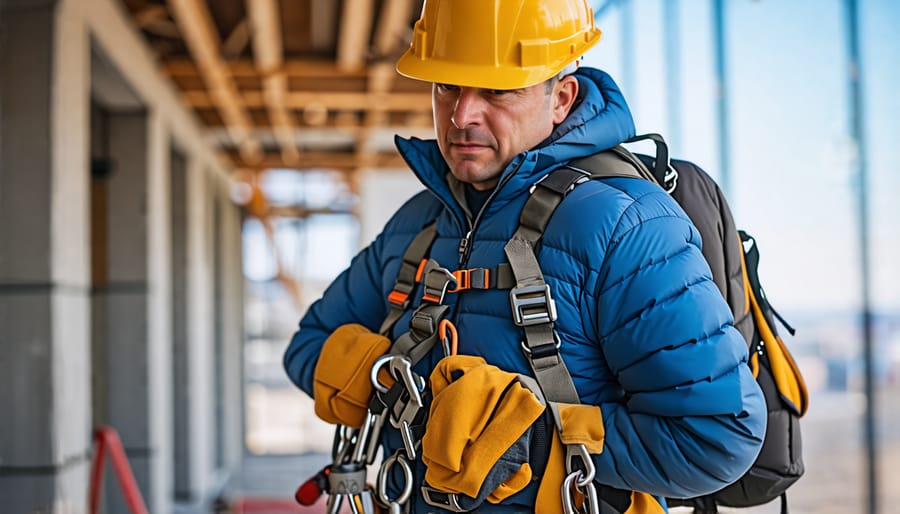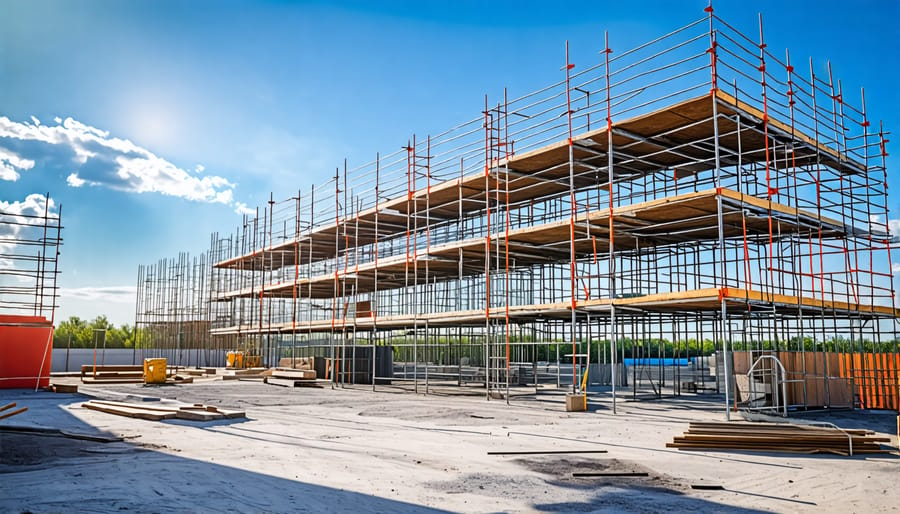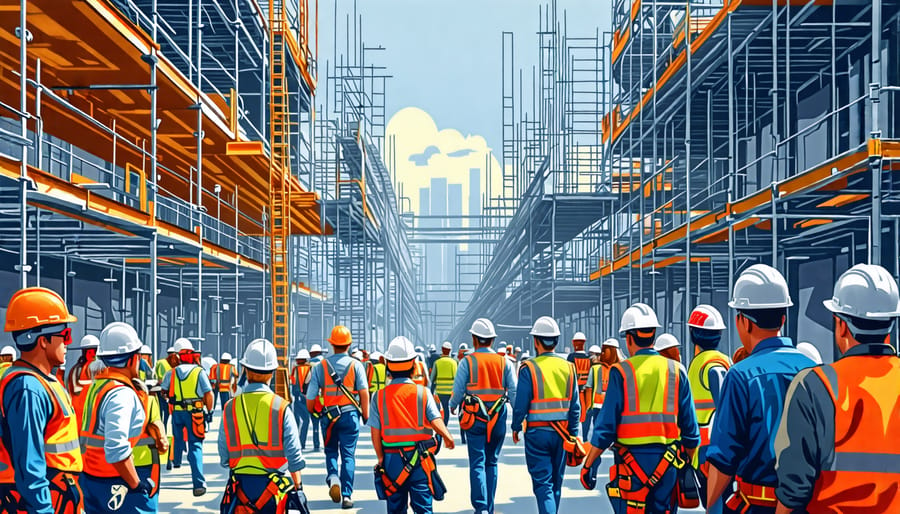Ensuring safety and compliance on construction sites is critical for protecting workers and avoiding costly fines. OSHA regulations set the standards that all construction companies must follow, covering everything from fall protection and scaffolding to electrical hazards and crane operation. Failure to adhere to these rules can result in serious injuries, fatalities, and significant financial penalties. As a construction professional, it’s essential to have a solid grasp of the key OSHA standards that apply to your projects. Familiarizing yourself with the regulations, implementing robust safety programs, and regularly training employees are vital for maintaining a safe work environment and staying on the right side of the law. In this article, we’ll provide an authoritative overview of the most important OSHA construction industry regulations you need to know, along with expert insights and real-world case studies to help you ensure compliance on your jobsites.
Key OSHA Standards for Construction
Fall Protection
OSHA’s fall protection standards for the construction industry, outlined in 29 CFR 1926 Subpart M, are crucial for ensuring worker safety at heights. Employers must provide fall protection systems, such as guardrails, safety nets, or personal fall arrest systems (PFAS), when employees work at elevations of 6 feet or more. Proper training on fall hazards and the use of protective equipment is mandatory. Regular inspections of fall protection systems are essential to identify and address any deficiencies promptly. Employers should also develop comprehensive fall protection plans tailored to their specific work environments. By adhering to OSHA’s fall protection requirements, construction companies can significantly reduce the risk of severe injuries and fatalities associated with falls from heights. Prioritizing fall safety not only protects workers but also demonstrates a commitment to regulatory compliance and a culture of safety within the organization.

Scaffolding
OSHA has established specific standards for scaffolding safety in the construction industry, as outlined in 29 CFR 1926 Subpart L. These regulations cover the design, construction, and use of scaffolds, requiring them to support their own weight and at least four times the maximum intended load. Scaffolds must be erected on solid footing and be equipped with guardrails, midrails, and toeboards. Employers are responsible for providing fall protection for workers on scaffolds more than 10 feet above a lower level. OSHA also mandates regular inspections of scaffolds by a competent person before each work shift and after any event that could affect their structural integrity. Proper training for workers who use scaffolds is essential, covering topics such as hazard recognition, safe work practices, and fall protection. By adhering to these OSHA standards, construction professionals can significantly reduce the risk of scaffolding-related accidents and injuries on the jobsite.

Ladders
OSHA’s ladder safety regulations are crucial for preventing falls and injuries on construction sites. Ladders must be inspected before each use for any defects or damage. They should be set up on stable, level surfaces with secure footing. Ladders must extend at least 3 feet above the landing surface and be positioned at a 4:1 ratio (1 foot out from the wall for every 4 feet of ladder height). Workers should maintain three points of contact when climbing and avoid overreaching. Proper ladder selection based on the task, weight capacity, and height is essential. Regular training on ladder safety procedures helps ensure compliance and a safer work environment.
Excavation
OSHA’s excavation standards in 29 CFR 1926 Subpart P establish critical safety requirements for excavation work. These standards mandate that a competent person inspect trenches daily, and as conditions change, for potential cave-ins, failures, hazardous atmospheres, and other dangers. Protective systems, such as sloping, shoring, or shielding, are required for trenches 5 feet deep or greater, unless the excavation is entirely in stable rock. Employers must provide ladders, steps, ramps, or other safe means of egress in trenches 4 feet or deeper, with travel distance to egress points no more than 25 lateral feet. By adhering to these standards, contractors can significantly reduce the risk of excavation-related accidents and fatalities on their jobsites.
Jobsite Safety Best Practices
Safety Training
Regular safety training is crucial for maintaining a safe and compliant construction worksite. OSHA standards mandate that employers provide workers with the necessary information and training to recognize, avoid, and prevent hazards on the job. This training should be conducted by qualified individuals and cover topics such as fall protection, scaffolding safety, electrical hazards, excavation safety, and proper use of personal protective equipment (PPE). Employers must also ensure that workers receive training in a language and vocabulary they understand. In addition to initial training, ongoing refresher courses are essential to keep workers up-to-date with the latest safety practices and regulations. This is especially important as new technologies, such as advanced construction technology, are introduced to the worksite. Regular training not only helps prevent accidents and injuries but also fosters a culture of safety among workers, encouraging them to take an active role in identifying and reporting potential hazards. By prioritizing safety training, construction companies can minimize risks, reduce downtime, and ultimately improve the overall efficiency and success of their projects.

Personal Protective Equipment (PPE)
Selecting and using appropriate Personal Protective Equipment (PPE) is crucial for maintaining safety on construction sites. OSHA mandates that employers assess the workplace to determine necessary PPE and provide workers with properly fitting equipment at no cost. Hard hats, safety glasses, earplugs or muffs, gloves, and steel-toed boots are standard PPE for most construction jobs. Respiratory protection may be required when working with hazardous materials or in dusty environments. Fall protection equipment, such as harnesses and lanyards, is essential when working at heights. Employers must train workers on the proper use, maintenance, and limitations of PPE. Regular inspections should be conducted to ensure PPE is in good condition and replaced when damaged. Encouraging a culture of PPE compliance on the jobsite helps prevent injuries and demonstrates a commitment to worker safety. By adhering to OSHA’s PPE standards and best practices, construction professionals can significantly reduce the risk of workplace accidents and create a safer environment for all.
Hazard Communication
Effective hazard communication is critical for preventing accidents and injuries in the construction industry. OSHA’s hazard communication standard (HCS) ensures that workers are informed about the potential hazards they may encounter on the job. Employers must provide training on the HCS, including how to read and understand safety data sheets (SDSs) and label elements. By implementing a comprehensive hazard communication program, construction companies can ensure that workers are aware of the risks associated with the chemicals they use, as well as the proper handling and storage procedures. This knowledge empowers workers to take necessary precautions and follow safety protocols, significantly reducing the likelihood of accidents and injuries. Additionally, effective communication between management and workers fosters a culture of safety, encouraging open dialogue about potential hazards and promoting a proactive approach to risk mitigation. By prioritizing hazard communication, construction companies demonstrate their commitment to worker well-being and regulatory compliance, ultimately creating a safer work environment for all.
OSHA Inspections and Compliance
Preparing for an Inspection
To prepare for an OSHA inspection, start by conducting a thorough self-inspection of your jobsite. Identify and address any potential hazards or non-compliance issues. Review your safety programs, training records, and injury logs to ensure they are up-to-date and readily accessible. Designate a company representative to accompany the OSHA inspector during the visit, and train them on how to respectfully interact with the inspector while protecting your company’s rights. Prepare your employees by informing them about the inspection process and their roles in maintaining a safe work environment. Emphasize the importance of honesty and cooperation during inspections. By taking these proactive steps, you can demonstrate your commitment to safety and compliance, which can help reduce the likelihood of citations and penalties.
Responding to Citations
When an employer receives a citation from OSHA, they have the right to contest the citation, proposed penalty, or abatement date. To do so, the employer must submit a written notice of contest to OSHA within 15 working days from receiving the citation. If the employer does not file a timely notice, the citation and proposed penalty become a final order not subject to review. Employers may request an informal conference with the OSHA Area Director to discuss the citation, penalties, abatement dates, or other information. This meeting provides an opportunity to negotiate and reach an informal settlement agreement. If an agreement is not reached, employers can proceed with formally contesting the citation. The Occupational Safety and Health Review Commission (OSHRC), an independent federal agency, will handle the contested case. The Commission assigns the case to an administrative law judge, who will hold a hearing and issue a decision based on the evidence presented. Employers have the right to appeal the administrative law judge’s decision to the Commission for further review.
Conclusion
In conclusion, understanding and adhering to OSHA construction industry regulations is crucial for ensuring the safety and well-being of workers on construction sites. By prioritizing safety training, utilizing appropriate personal protective equipment, and maintaining a proactive approach to hazard identification and mitigation, construction companies can create a culture of safety that benefits everyone involved. Proper OSHA compliance not only protects workers from potential injuries and illnesses but also helps companies avoid costly fines and legal liabilities. Moreover, a strong commitment to safety can improve employee morale, increase productivity, and enhance the overall reputation of the company within the industry. As the construction sector continues to evolve and face new challenges, it is essential for professionals at all levels to stay informed about OSHA standards and best practices. By working together to promote a safe and compliant work environment, the construction industry can build a stronger, more resilient future for all stakeholders.

